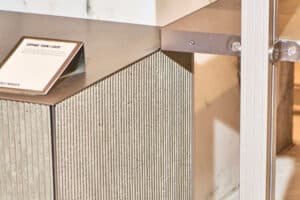Good design doesn’t happen in isolation. It takes collaboration, curiosity and the willingness to get hands-on, sometimes quite literally. For Architectural Design Director, Tim Grove, the most rewarding projects are those where the team is involved from the very start, helping clients shape not only the brief but the vision.
Early involvement creates better project outcomes for the client
The earlier we are involved in a project, the greater the opportunity for us to achieve the best possible outcome for the client is. At the very earliest stage before a brief is assembled, we assess the client’s requirements, project objectives, budget and feasibility studies. From there we can formulate a detailed brief that more closely addresses their underlying aspirations – which may not always be what they initially thought.
We’re acutely aware of how everyone in the project team needs to work
It is people that make projects and we are acutely aware we are part of an overall project team. Collaboration is key amongst all parties to the success of a project. Our involvement does not end at issuing the drawings and we undertake site visits during the project to check work and answer questions. This is one of the aspects of the work I enjoy the most. Firstly, it is always great to see the reality of what we design slowly come to life, but we are aware that ultimately someone has to read our drawings working in the cold and wet sometimes, trying to achieve the outcome.
Particularly on older or historic buildings, there will always be issues that arise on site that have not been accounted for, and our technical expertise in building design means we are there to help overcome difficulties, finding solutions in keeping with the final project vision and hopefully one that is practical and works with the contractor.
Detail is a necessary obsession that pays dividends
I am a strong believer that projects live or die by the detail. I am obsessed with detail which is directly attributable to my background in furniture design. Furniture design requires the designer to look at a finer scale – in a piece of furniture design there is nowhere to hide; all the detail is on show and so every element is thoroughly thought about. How a rail meets an upright; the choice of a fixing detail or the stitch in a fabric all has big impacts on the final design and can be the difference in its success. Every detail and junction is always an opportunity to introduce something interesting.
I bring this obsession with me in to building design too. I am a big believer that if things are well detailed one can feel that as soon as one enters a space. You may not be conscious of these details, but you can feel the quality and harmony as soon as you enter a room. The obsession with attention to detail is not just about the look and feel of the design, it also includes the technical aspects of the design and the wider context of its use. Considering how elements are constructed are key to aiding a quality installation. This also includes considering future work such as maintenance, repair or redecorating, such that over the long term the installation maintains its quality.
Small decisions define how a space feels
Wider considerations include thinking about who is using the space and how they may use it to ensure the design is fit for the intended purpose. We hate seeing wasted opportunities and resources such as materials installed poorly or in a way that means they very quickly look poor in use. It’s the small decisions that define how a space feels, functions and endures. This precision is not just aesthetic; it’s about ensuring every joint, surface and system works harmoniously.




